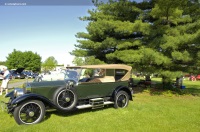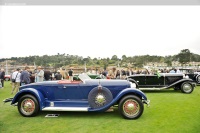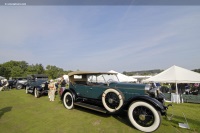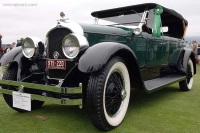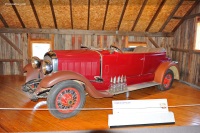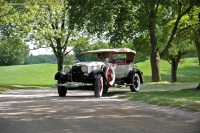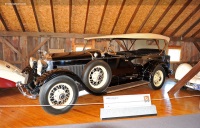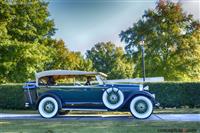Coachwork by Locke

Chassis number: 44966

Chassis number: 44431
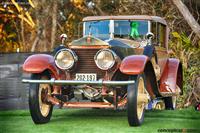
Chassis number: S283 PK
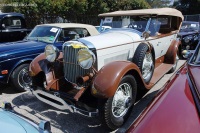
Chassis number: 51112
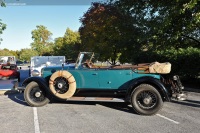
Chassis number: 48264
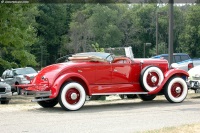
Chassis number: 377W

Engine number: W19396

Chassis number: 65674

Chassis number: 13-4
Engine number: 62161
Justus Vinton Locke was born in Massachusetts in the mid-1860s. He studied engineering at Central New York's Hamilton College. He worked as an apprentice with the Healey & Company, a New York City carriage building company, before landing a job with Demarest & Company of New Haven, Connecticut.
By 1903, Locke had created his own company, with financial help from friends, the Fleischmann family. The company did well in the newly created automotive business. Locke built custom bodies on many prestigious chassis, such as Stutz, Rolls-Royce, Renault, Packard, Pierce-Arrow, Marmon, Hotchkiss, Locomobile, Duesenberg, Cadillac, and more. After World War I, Locke expanded and purchased a larger building near New York City's new Queensboro Bridge. They became the New York distributor for Hotchkiss automobiles.
On April 16th of 1925, at the age of 60, Justus Locke passed away. Locke had no children; the companies' finances were turned over to attorney Charles M. Fleischmann. Tasman remained as the companies chief engineer and in charge of the factory and production.
Business slowed for a while, forcing the company to surrender some of their factory space. Within a short time, business resumed. Orders were placed by Franklin, Chrysler and Lincoln to design and produce a series of factory customs. This required the Locke company to expand. Space in New York City was at a premium, so they turned their sights on Rochester, New York.
Designers W. Everett Miller and John Tjaarda were hired for the Rochester facilities. These two individuals had been employed at the Walter M. Murphy Company. Rudy Creteur worked as a designer in the New York City office.
The New York City office transformed their services to include housing, storing, and installing bodies for customers. The company would store the summer or winter body, and install it at the customer's request. The Rochester factory worked solely on creating new bodies. Detroit offices were opened; these locations were used to promote sales, advertising, and company recognition.
From 1925 through 1932, the Rochester plant specialized in series-built cabriolets, dual-cowl phaetons, convertible sedans, convertible victoria's, and other open bodied designs. Their customers included Chrysler, Franklin, Lincoln, Marmon, Pierce-Arrow, Stutz, Packard, Ruxton, and more. Though they created custom bodies, many of times their purchaser would order the bodies in bulk, such as 25 to 100 examples, and offer them through the factory. This would reduce the production costs and allow the customer to get a high-quality custom body produced in low quantities, and from one of the top designers of their day.
During the onset of The Great Depression, orders began to slow. Fleischmann was forced to close the Rochester plant, and shortly-thereafter, the Manhattan facilities followed suite. The Locke company moved their facilities to a rented space and painted and refurbished cars for five more years. In 1937, the company was out of business.
By 1903, Locke had created his own company, with financial help from friends, the Fleischmann family. The company did well in the newly created automotive business. Locke built custom bodies on many prestigious chassis, such as Stutz, Rolls-Royce, Renault, Packard, Pierce-Arrow, Marmon, Hotchkiss, Locomobile, Duesenberg, Cadillac, and more. After World War I, Locke expanded and purchased a larger building near New York City's new Queensboro Bridge. They became the New York distributor for Hotchkiss automobiles.
On April 16th of 1925, at the age of 60, Justus Locke passed away. Locke had no children; the companies' finances were turned over to attorney Charles M. Fleischmann. Tasman remained as the companies chief engineer and in charge of the factory and production.
Business slowed for a while, forcing the company to surrender some of their factory space. Within a short time, business resumed. Orders were placed by Franklin, Chrysler and Lincoln to design and produce a series of factory customs. This required the Locke company to expand. Space in New York City was at a premium, so they turned their sights on Rochester, New York.
Designers W. Everett Miller and John Tjaarda were hired for the Rochester facilities. These two individuals had been employed at the Walter M. Murphy Company. Rudy Creteur worked as a designer in the New York City office.
The New York City office transformed their services to include housing, storing, and installing bodies for customers. The company would store the summer or winter body, and install it at the customer's request. The Rochester factory worked solely on creating new bodies. Detroit offices were opened; these locations were used to promote sales, advertising, and company recognition.
From 1925 through 1932, the Rochester plant specialized in series-built cabriolets, dual-cowl phaetons, convertible sedans, convertible victoria's, and other open bodied designs. Their customers included Chrysler, Franklin, Lincoln, Marmon, Pierce-Arrow, Stutz, Packard, Ruxton, and more. Though they created custom bodies, many of times their purchaser would order the bodies in bulk, such as 25 to 100 examples, and offer them through the factory. This would reduce the production costs and allow the customer to get a high-quality custom body produced in low quantities, and from one of the top designers of their day.
During the onset of The Great Depression, orders began to slow. Fleischmann was forced to close the Rochester plant, and shortly-thereafter, the Manhattan facilities followed suite. The Locke company moved their facilities to a rented space and painted and refurbished cars for five more years. In 1937, the company was out of business.
Q: What manufacturers did Locke create coachwork for? A: Locke created coachwork for (at least) the following manufacturers: Chrysler, Duesenberg, Lincoln, Locomobile, Marmon, Renault, Rolls-Royce Q: What body styles did Locke create? A: Locke created (at least) the following body styles: 3-Passenger Sedan, All Weather Tourer, Convertible, Convertible Sedan, Custom Roadster, Double Cowl Sport Phaeton, Dual Cowl Phaeton Locke, Dual Cowl Sport Phaeton, Dual-Cowl Phaeton, Imperial Touralette, Locke Touring, Roadster, Speedster Phaeton, Sport Phaeton, Sport Roadster, Sport Tourer, Tourer, Victoria

